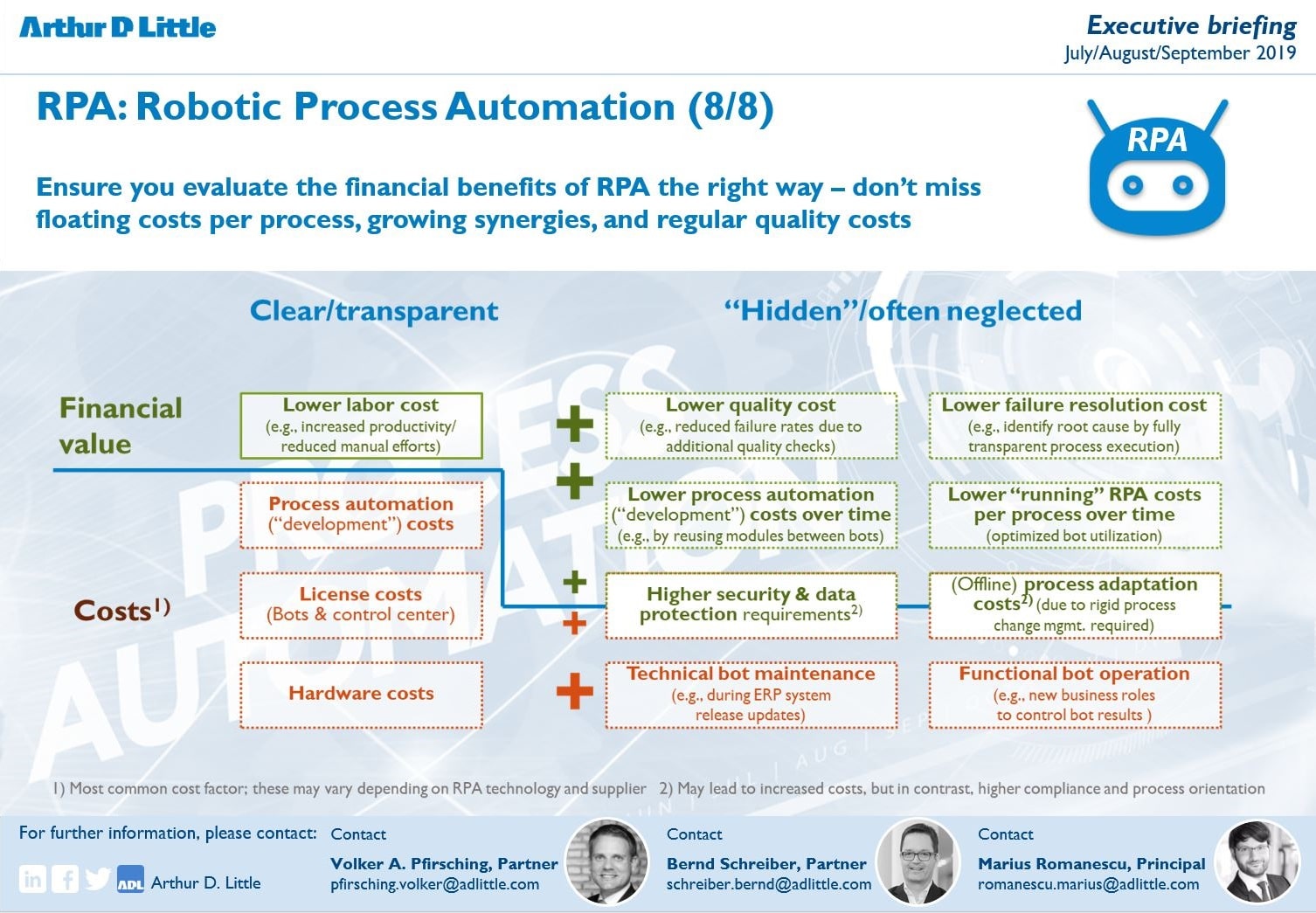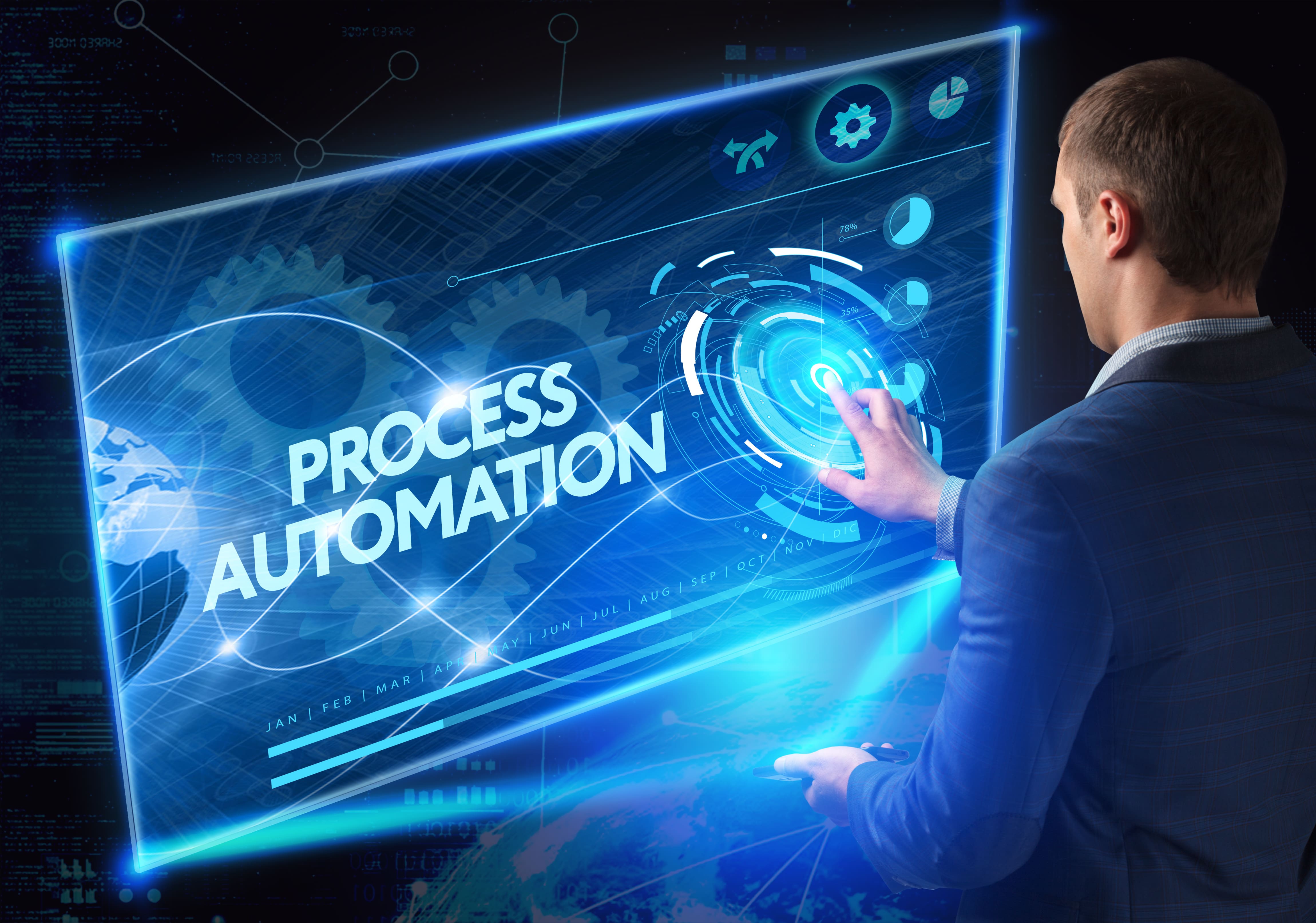
DOWNLOAD
DATE
Contact
Executive Briefing Series
An 8-part series to be updated weekly from July to September 2019
RPA is changing the way processes are automated. In the following guide we will give insights what RPA is, what can be expected by RPA – now and in future - and how to enable a fast operationalization and scaling of process automation by RPA.
1. RPA - What it is…
RPA is characterized by high applicability and speed of implementation while enabling high cost and other process improvement benefits.
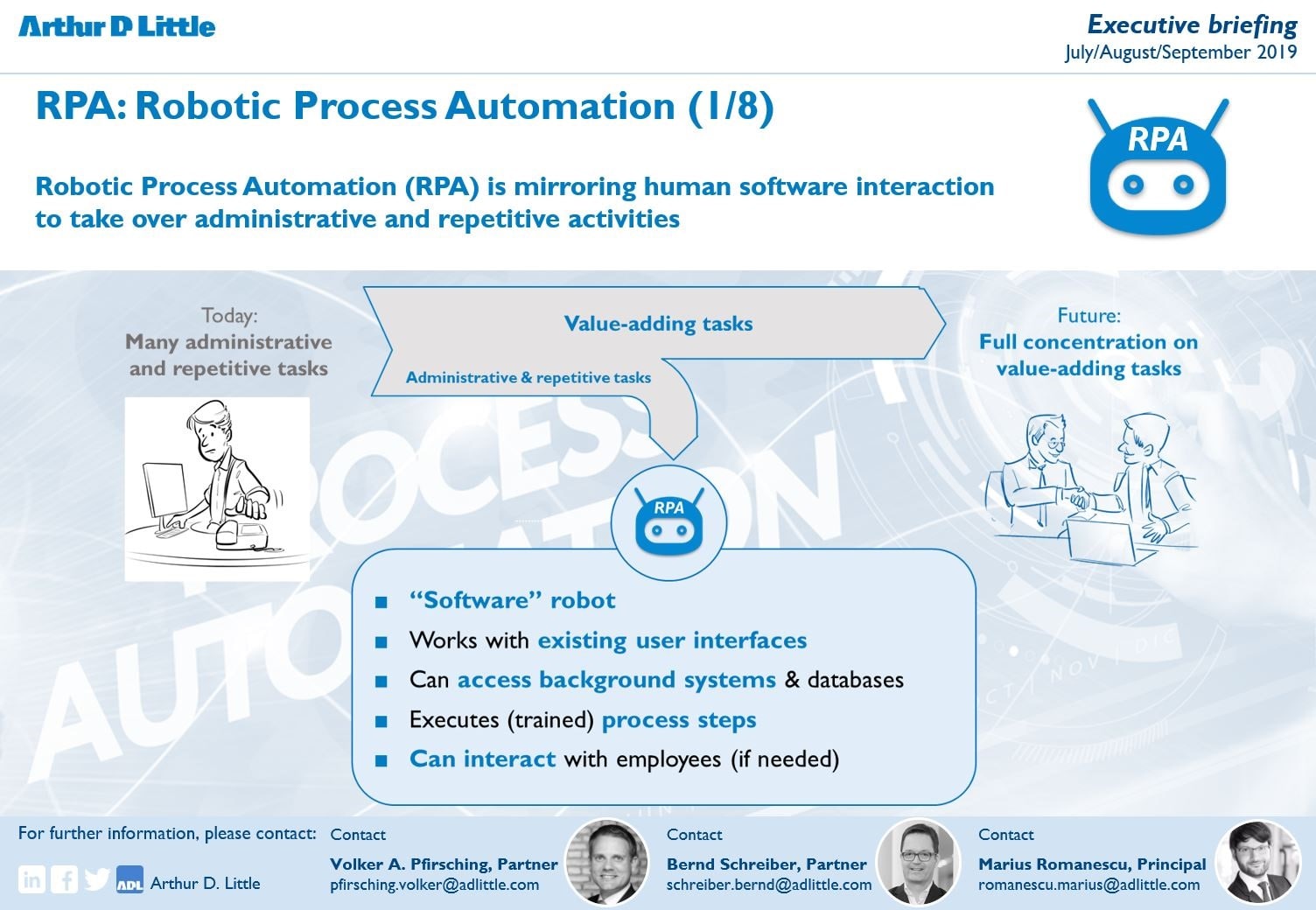
2. Why to bother…
RPA is characterized by high applicability and speed of implementation while enabling high cost and other process improvement benefits.
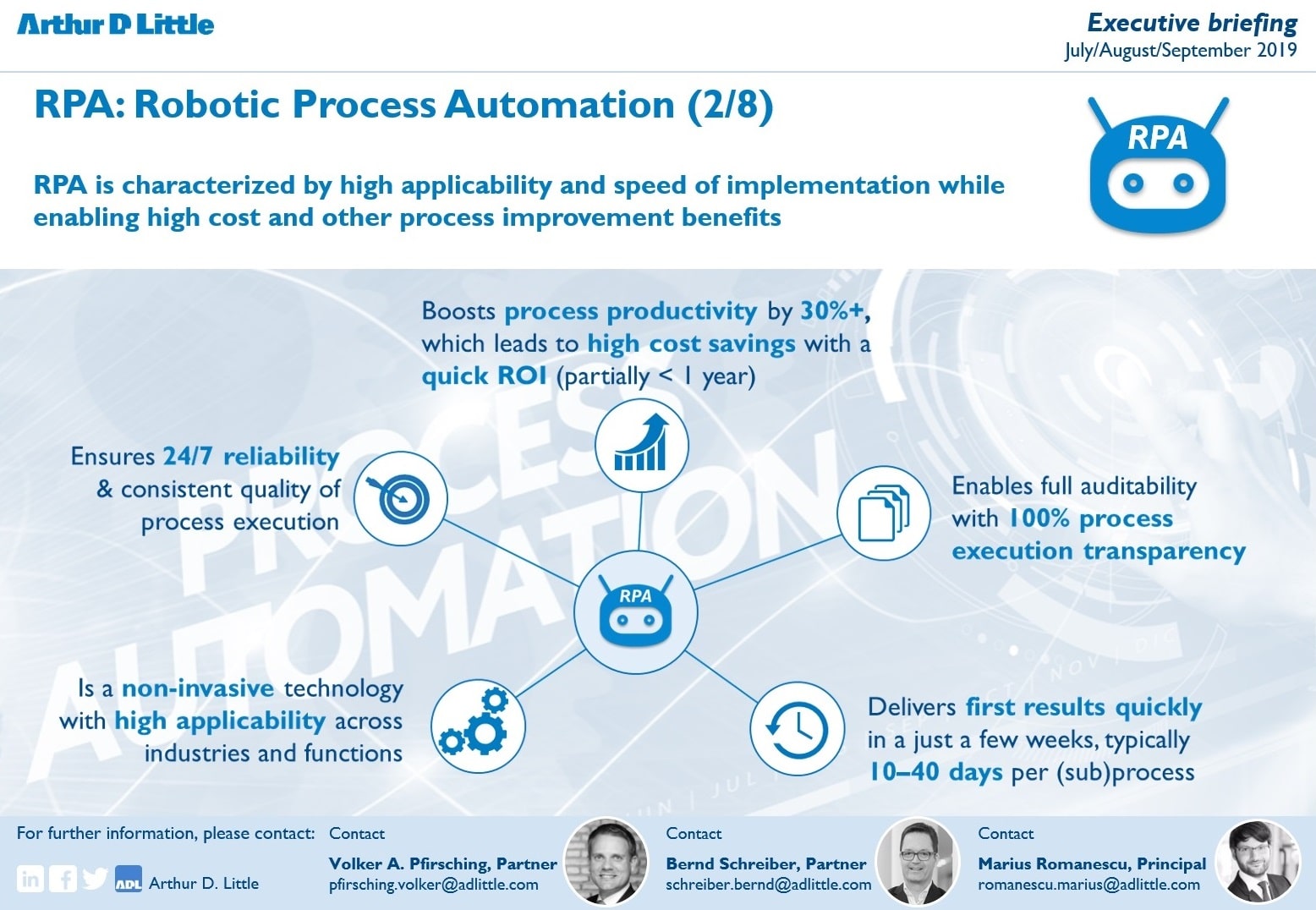
3. Where to start...
To identify RPA quick wins as a starting point of your RPA journey, check process steps for a high RPA applicability using five simple questions.
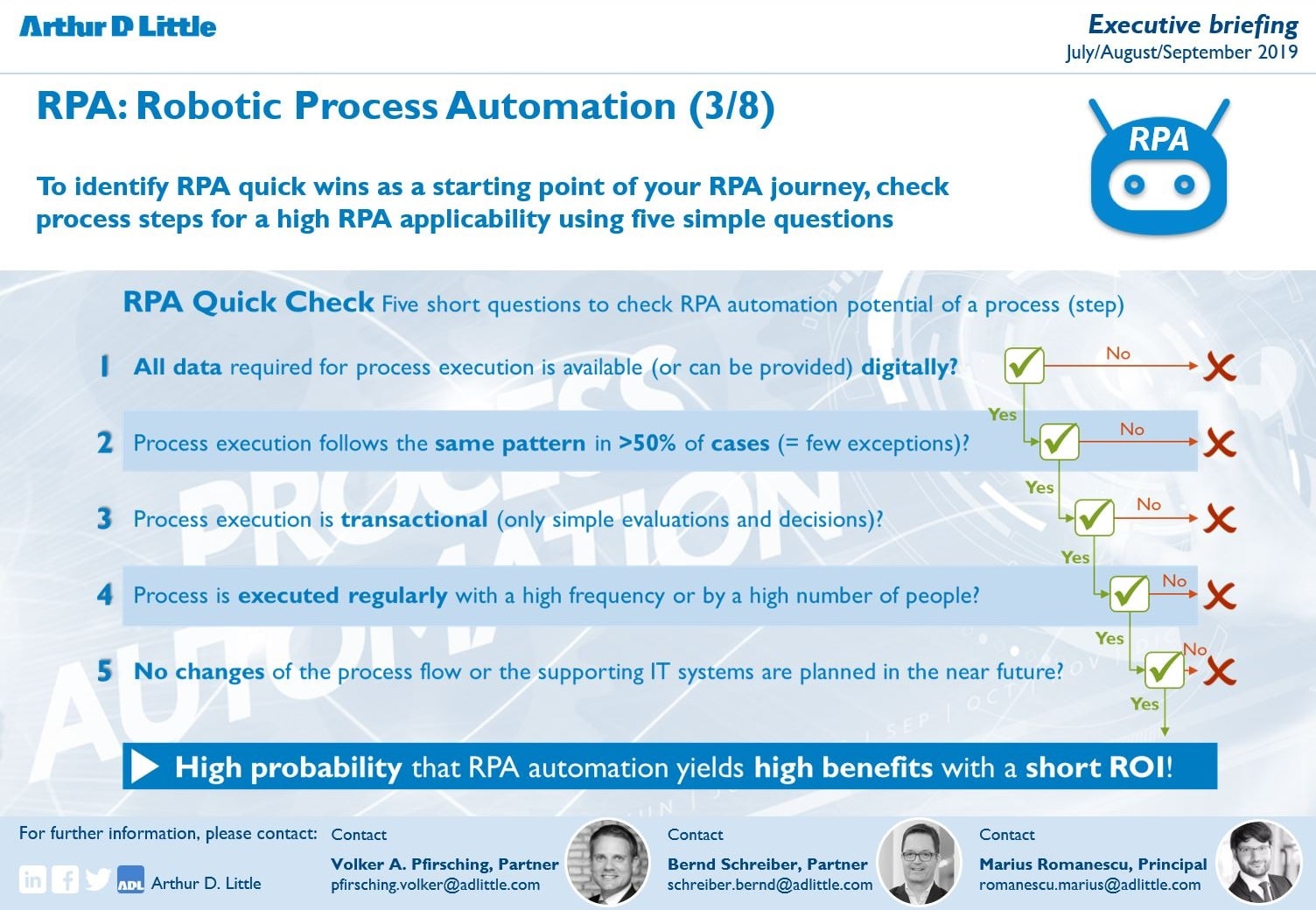
4. RPA - What the future promises…
Most companies are still at the beginning of leveraging the full potential of RPA – the evolution promises many more applications than there are today
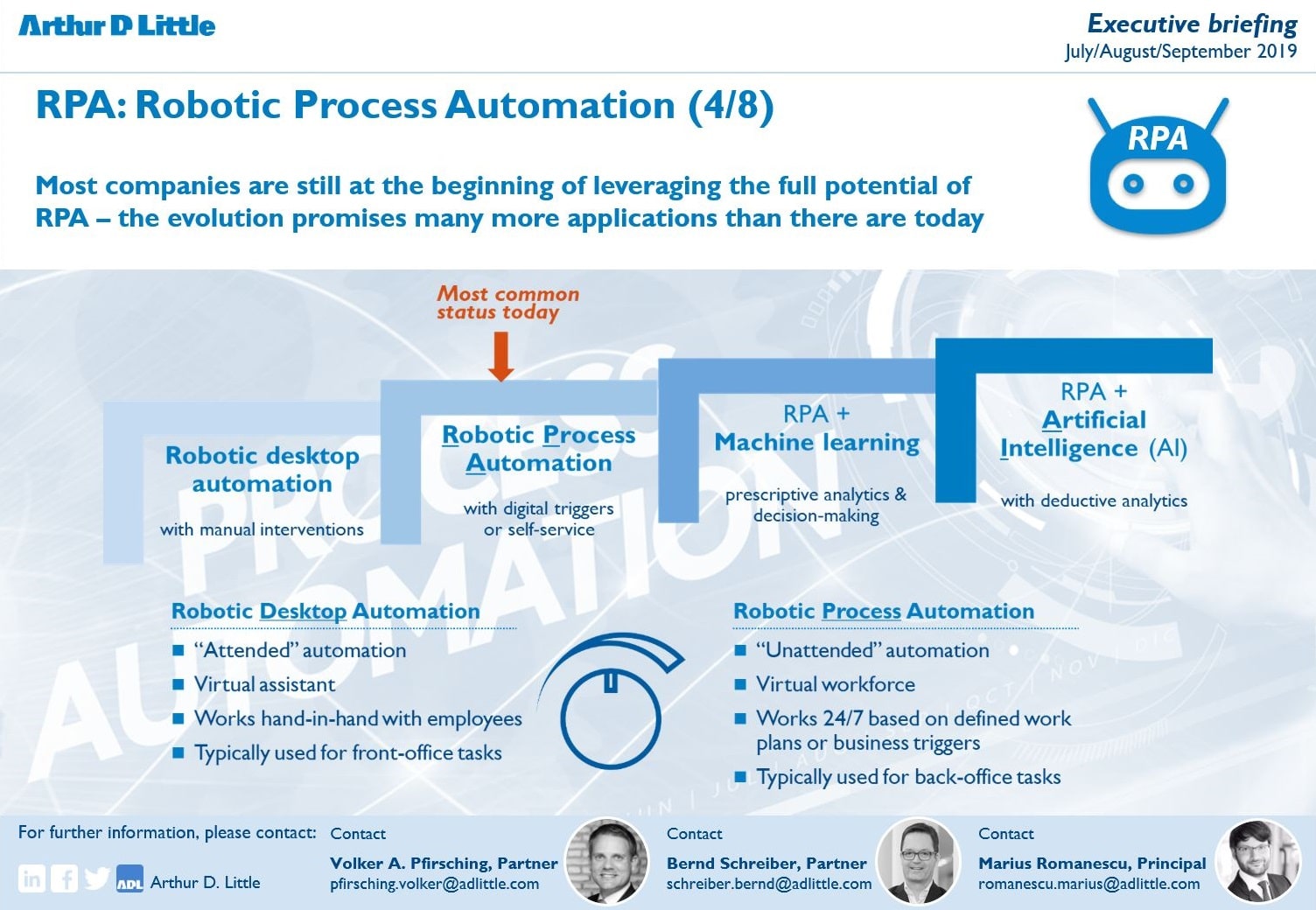
5. RPA vs. AI? RPA with AI…
RPA versus Artificial Intelligence (AI) is not the question: RPA can be flexibly connected with different AI engines based on required capabilities.
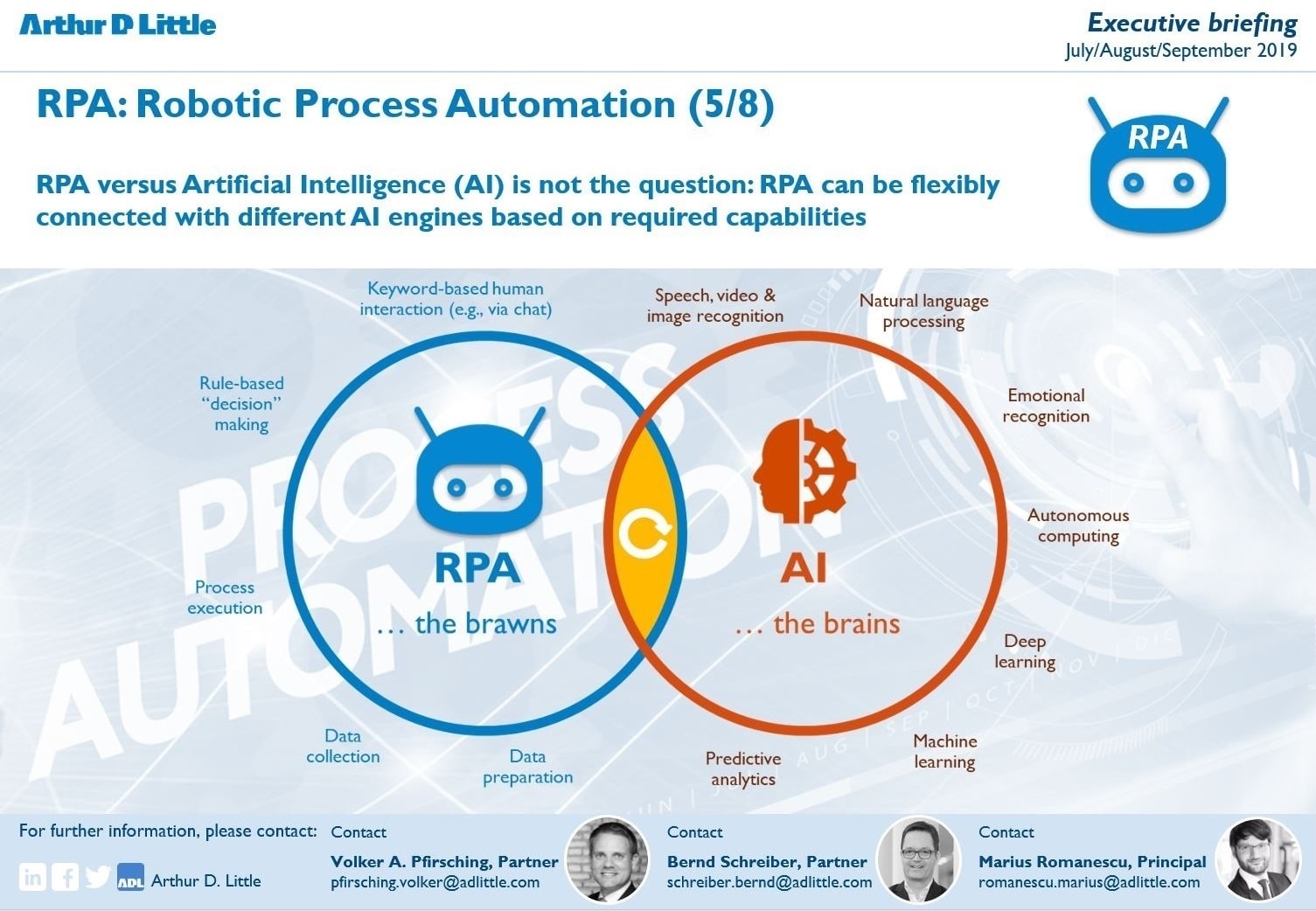
6. RPA - How to do it best…
Process automation with RPA should be split into small “sprints” taking 15 to 45 days to reduce risks and enable benefits quickly.
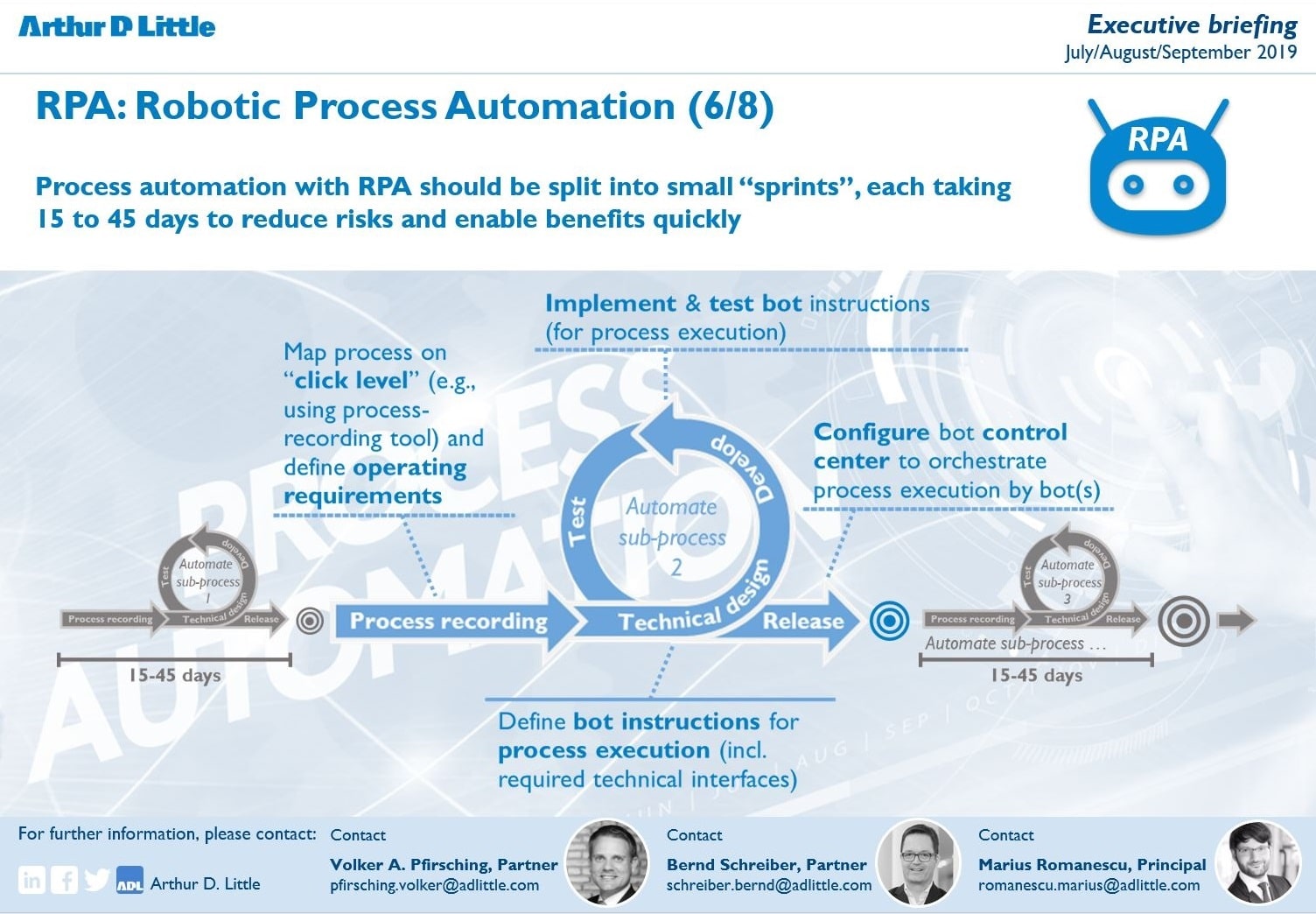
7. RPA – Scaling it right…
To scale RPA right, establish an agile RPA operating model that is integrated with the company’s existing business and IT processes
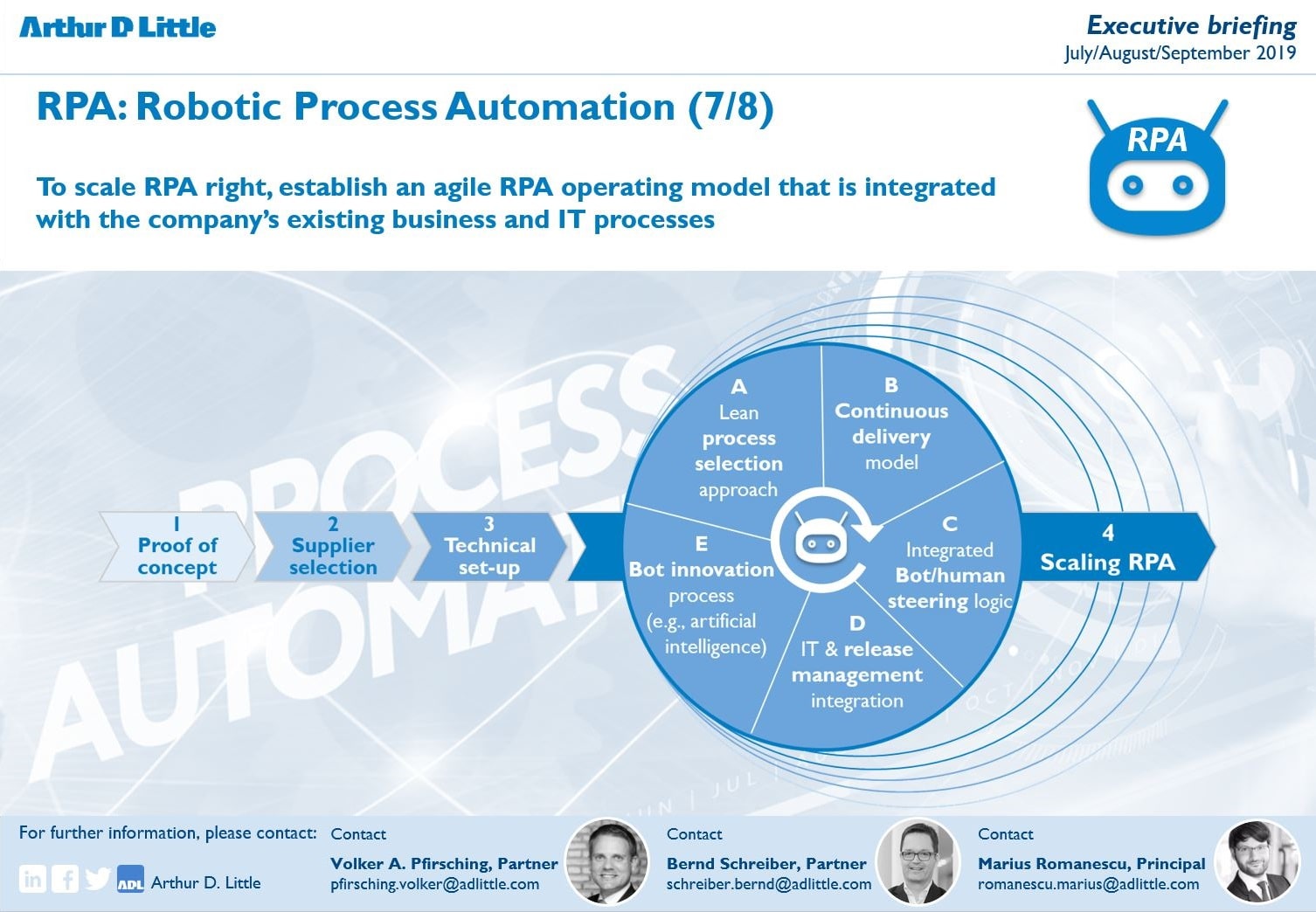
8. RPA – Don‘t step in to the evaluation trap…
Ensure to evaluate financial benefits of RPA the right way – Don’t miss floating costs per process, growing synergies, regular quality costs.
